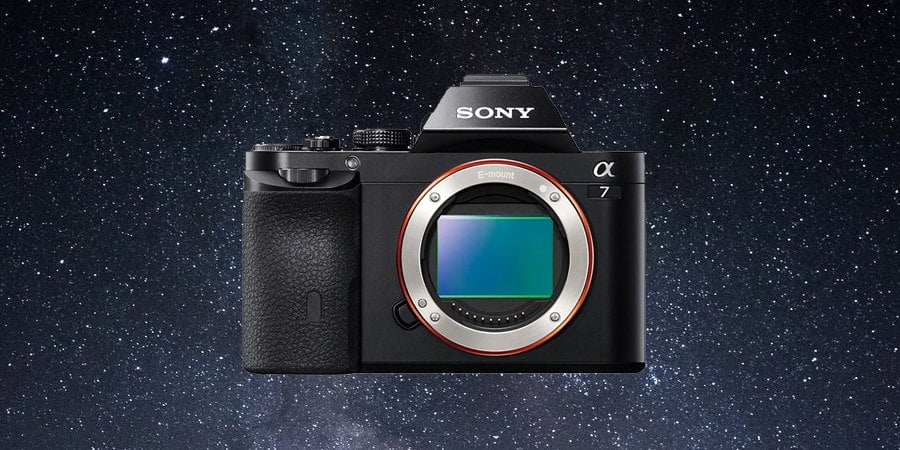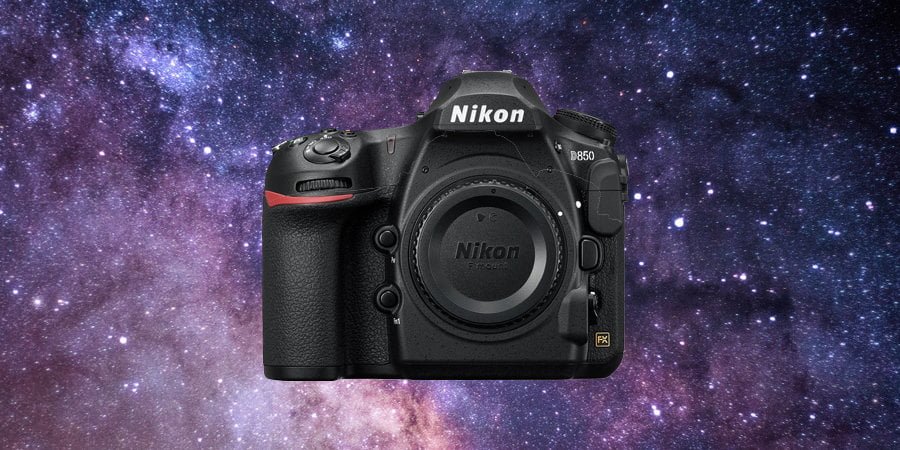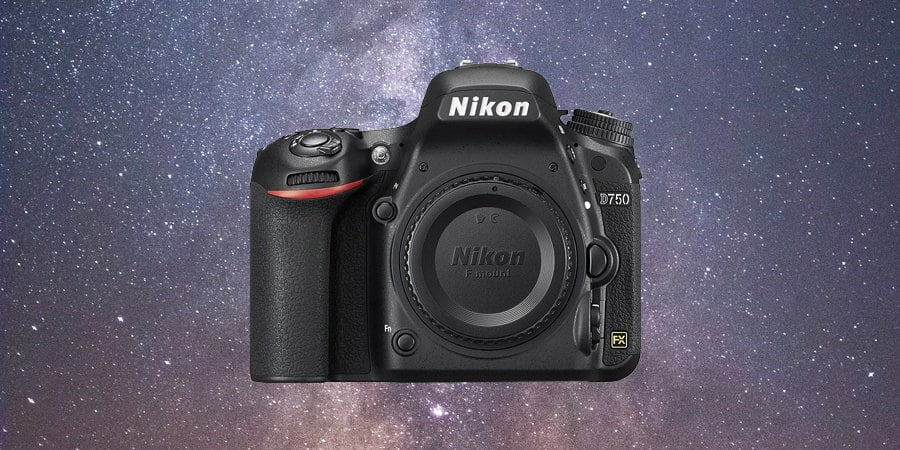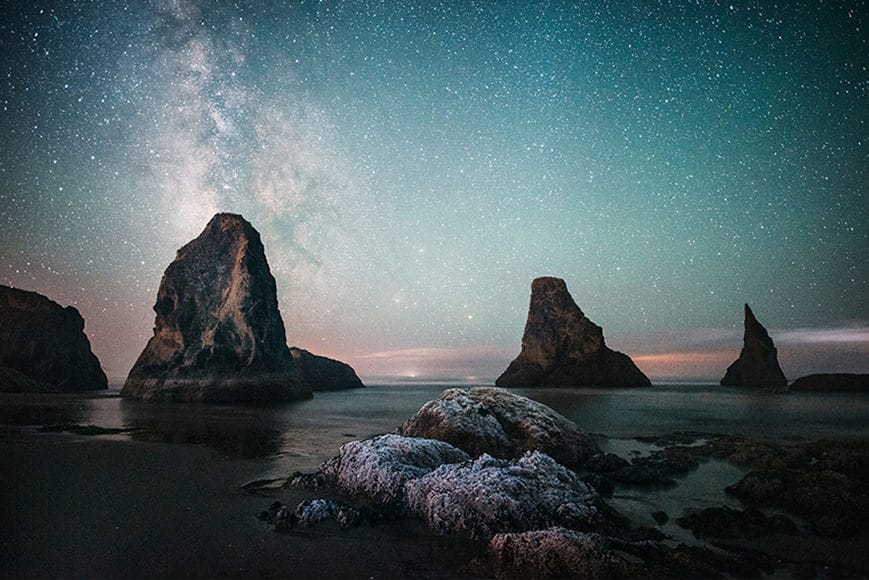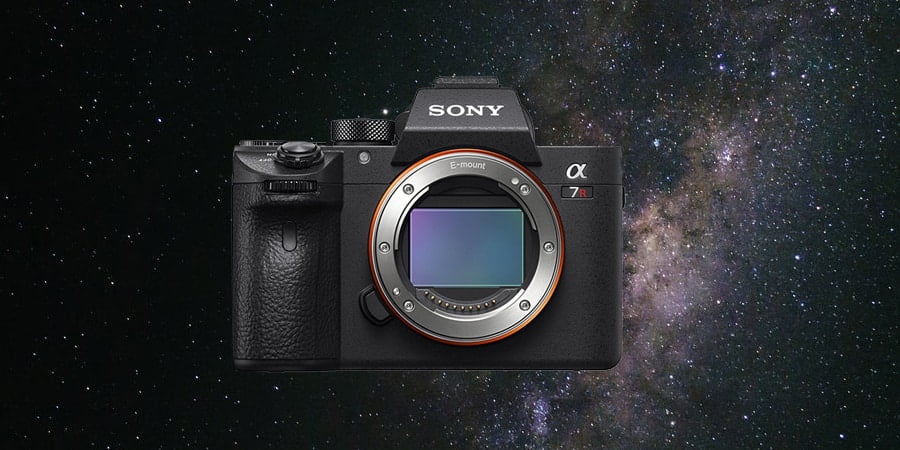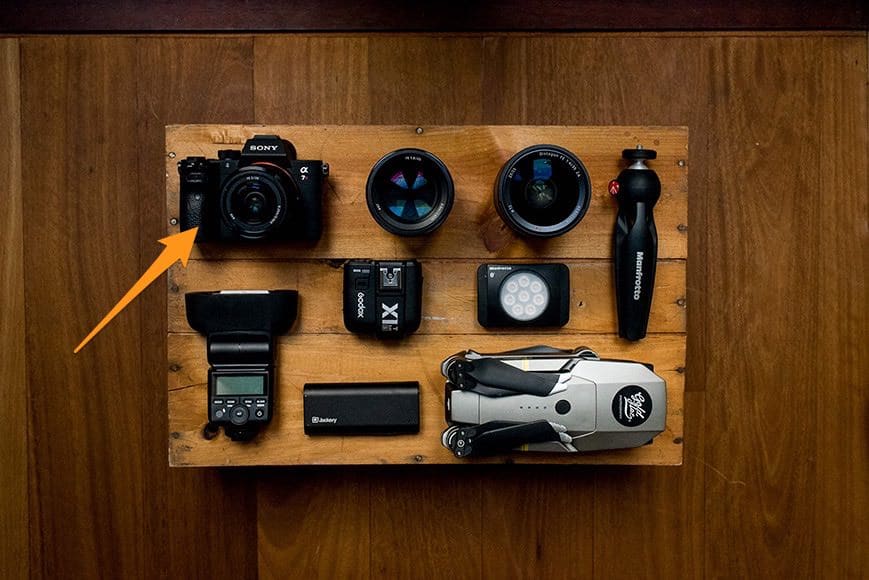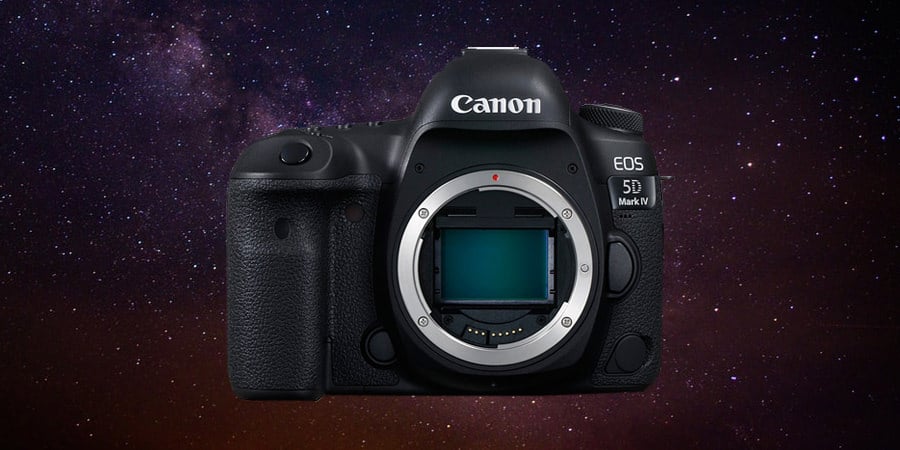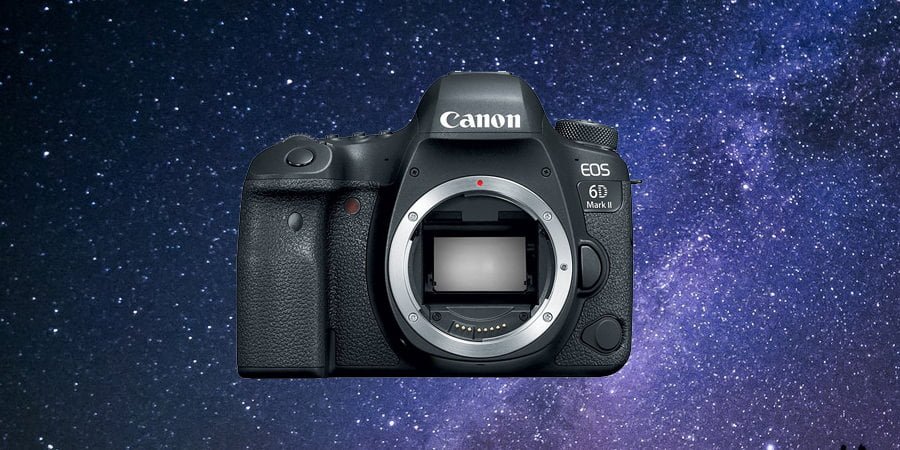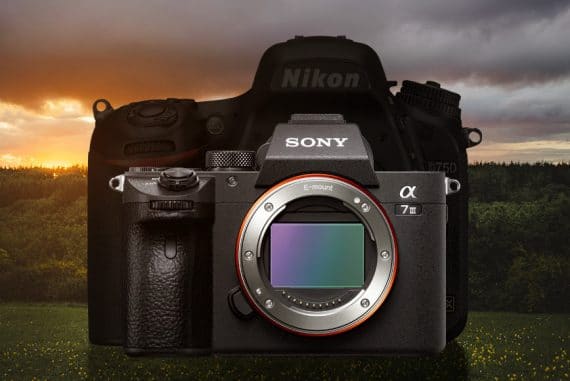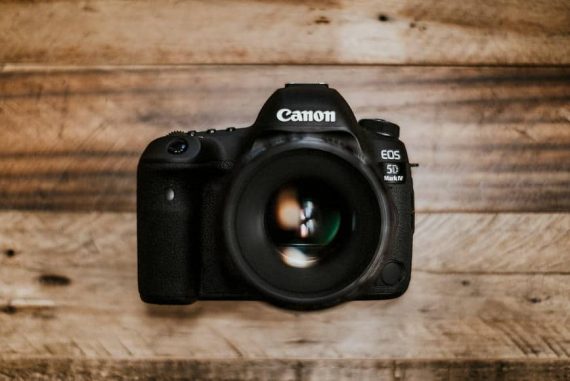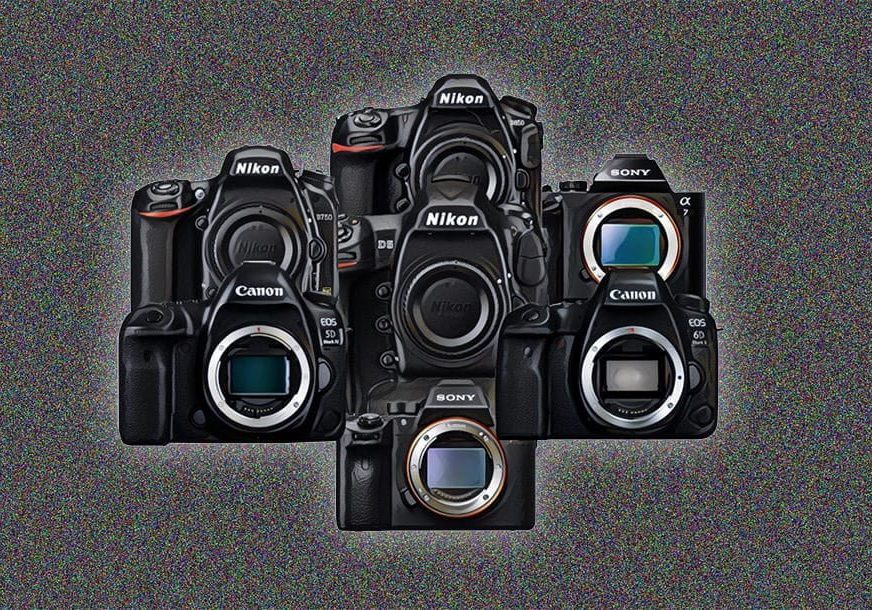
Best Full Frame Camera (DSLR & Mirrorless)
Looking to invest in a full frame camera? Great idea! I've reviewed the best full frame cameras of 2024. Don't miss my cheapest full frame camera options!
As a professional photographer and gear reviewer, I’m really excited to publish this review on the best full frame cameras of 2024.
Cameras that use a 35mm ‘full frame’ image sensor used to be reserved for professionals or wealthy hobbyists.
However, the recent growth of cheap full frame camera options has meant anyone can take advantage of the alluring format.
There’s a lot of discussion about the benefits of full frame sensors over crop sensors (APS-C). In this article, I’ll explain why full frame cameras are still the holy grail for most photographers.
I’ve also included a list of the current full frame cameras available from the major brands, but let’s start off with my pick of the very best of the year.
Best Full Frame Cameras in 2024
| Image | Product | Details | |
|---|---|---|---|
 | Sony a7 III#1 PICK |
| Check Latest Price |
 | Nikon D850TOP RATED |
| Check Latest Price |
 | Nikon D750BEST VALUE |
| Check Latest Price |
 | Sony a7R III |
| Check Latest Price |
 | Sony a9 |
| Check Latest Price |
 | Canon 5D Mark IV |
| Check Latest Price |
 | Nikon D5 |
| Check Latest Price |
 | Canon 6D Mark II |
| Check Latest Price |
Sony a7 III
Megapixels: 24.3
Dimensions: 4.9 x 3.7 x 2.8 in (126 x 95 x 73 mm)
Weight: 650 g (22.9 oz)
Oh Sony, what did you do to the camera market in 2018?! I can’t remember a camera release that piqued so much interest as the incredible Sony a7 III.
Sony has made a name for itself for fast-moving innovation in the mirrorless camera market, and with the Sony a7 III, its position has been cemented as a major competitor to Canon and Nikon, set to disrupt DSLR sales worldwide.
While the other big camera manufacturers choose to release updated versions of their full frame camera models every few years, Sony seems to rush out its releases every year, often to the confusion/delight of consumers.
The Sony a7 III is a strange beast, eating into not only the established DSLR-owner market but also cannibalizing sales of Sony’s more expensive offerings.
You’ll see 2 other Sony mirrorless cameras below in this list of the best full frame cameras of the year. Both of them offer certain features that the Sony a7 III does not, but these features only appeal to a very small number of photographers.
More importantly, both of the other recommended Sony full frame cameras are much more expensive than this one!
So what’s so good about the Sony a7 III? Let’s start with the heart of every full frame camera – the sensor.
Sony makes incredible camera sensors, so good in fact that other camera manufacturers like Nikon actually use them in their cameras too.
The Sony a7 III features a 24.2 MP back-illuminated sensor, which helps to improve low-light performance. 24.2 MP seems to be the perfect middle-ground for most photographers, delivering detailed images that can be blown up or cropped into, but not so large as to slow down post production workflow.
A killer feature of the Sony a7 III is its class-leading auto-focus performance. Borrowing from the Sony a9, the Sony a7 III offers the same speed, precision and tracking performance of its big brother for a fraction of the price.
The inclusion of the Sony a7 III in my best full frame cameras roundup is actually the reason why I didn’t include the Sony a9. Yes, the a9 is a phenomenal full frame mirrorless camera, but it’s also very expensive and has been made largely redundant thanks to the similar AF performance of the Sony a7 III.
693 phase-detection AF points and 425 contrast-detection AF points on the Sony a7 III provide high-density wide-area coverage, which in practice means less missed shots and more extreme composition options. Being able to move your focus point right to the edge of your screen is something DSLR shooters would kill for…
Add this to the 10 fps with full AF/AE tracking and you’ve got a laser-sighted machine gun of a camera that is equally ready for static subjects as it is fast moving objects. An ISO range up to 51,200 means that even after dark you can still get a clear shot with fast shutter speed.
Although not exclusive to the Sony a7 III, the much-publicized Eye-AF is a major draw card of this camera when compared to other brands. If you’ve ever been frustrated trying to manually track your subject with your camera’s joystick or trackpad, Eye-AF will blow your mind.
With the Eye-AF and face recognition of the Sony a7 III, taking photos of people has never been so easy.
I just wish the touch screen on the Sony a7 III was better implemented. Currently, you’re only able to move the focus point by tapping areas of the screen, and confusingly still have to half press the shutter button to actually focus.
There’s no touch capability in review mode either, so no pinch to zoom or swipe to move to the next image like you have on the Nikon D850 and Canon 5D Mark IV to name just two.
I resisted mirrorless cameras for a long time for one main reason – ergonomics. DSLRs just feel better in every way than compact mirrorless cameras.
Thankfully, the new breed of Sony a7 cameras has changed this, with larger grips, dedicated buttons and dials, and a general feel that’s a decent middle ground between a mirrorless and a DSLR. It’s definitely not perfect, but the ergonomics of the Sony a7 III are decent enough to make the switch… which is exactly what I did!
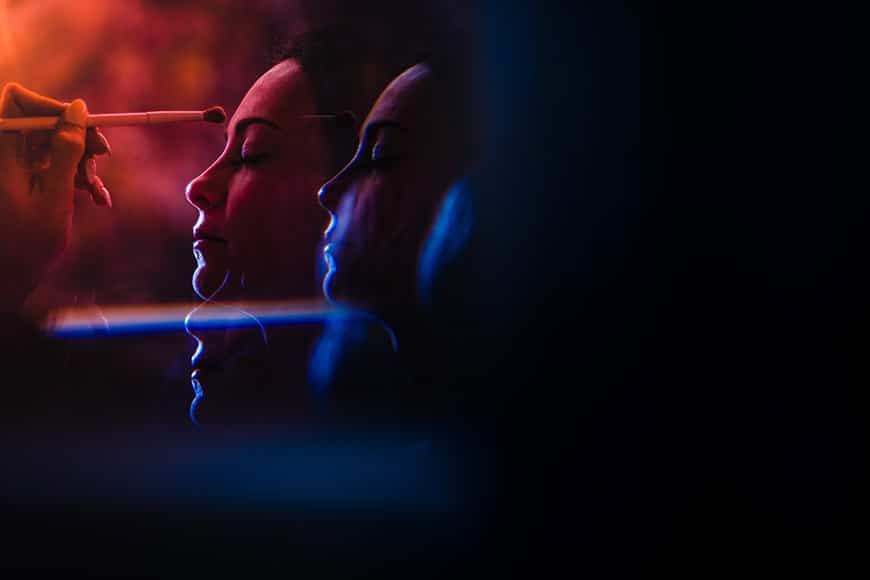
Sony a7 III + Sony 85mm f/1.8 | 1/320 f/2.8 ISO100 | Jason Vinson
The Sony a7 III also offers seemingly infinite customisation options. Yes, Sony menus still suck, but once you’ve spent a few hours assigning your most used features to custom buttons, you’ll never have to delve into the labyrinth again ;-)
As for battery life, the Sony a7 III well and truly puts to rest the notion that mirrorless cameras can’t keep up with DSLRs. Sony rates the battery for around 610 images per charge, but with more modest Live View usage, I found I could actually shoot a whole wedding on just two batteries, and still come home with 50% charge remaining.
Something I love about these Sony mirrorless cameras is the ability to top up the battery charge by using a portable battery pack, like the ones you use to charge your smartphone.
Other Sony a7 III accessories that I recommend are listed in this guide.
It’s also worth noting that the range of lenses for Sony full frame cameras is steadily growing, and offers every focal length most photographers would ever need.
In conclusion, the Sony a7 III doesn’t really offer anything more than the other latest Sony releases, but instead it offers a combination of all the best features for an incredibly attractive price. It’s almost too good to be true. If you ask “What is a full frame camera?” the answer would be this.
That’s why I believe the Sony a7 III is the best mirrorless full frame camera of the year, and I expect it to remain that way even if Nikon and Canon surprise us all with their own mirrorless full frame cameras later in 2024.
Nikon D850
Megapixels: 45.7
Dimensions: 5.8 x 4.9 x 3.1 in (146 x 124 x 78.5 mm)
Weight: 915 g (32.2 oz)
I waited a long time for the Nikon D850 full frame DSLR camera to arrive. Me and hundreds of thousands of other photographers…
I started my professional photography career with the Nikon D700, a camera I fell in love with and miss shooting with even today (see my mini Nikon D700 review). Next came the Nikon D750, which I’ll talk more about below, and then there was a wait that seemed like an eternity.
Nothing was inherently wrong with the Nikon D750, but photographers start getting impatient when other brands are launching fancy new cameras all around them and they’re stuck with a seemingly aging model.
The Nikon D850 is actually more of an update to the Nikon D810 than an update to the D750. It’s an 8-series camera after all, but the ’50’ is a subtle hint that D750 shooters should really head this way too…
First off, the bad. It’s bigger, heavier and a lot more expensive than the D750. However, it offers so much more than it too.

Nikon 750 (left) vs Nikon D850 (right) size comparison.
Let’s start with that incredible sensor, which offers a medium-format-like 45.7 MP! Commercial, architecture, landscape and any other photography genre that traditionally needs as many megapixels as possible are well and truly covered.
Wedding, event, sports and other photography genres that typically shoot high volume are catered for too, with the ability to choose between 3 different resolutions – full, medium and small RAW (something that I wish the Sony a7R III would offer!) It really is the ultimate in flexibility, almost like having 3 cameras in one.
(You can read more about how one wedding photographer takes advantage of the different resolution sizes in this Nikon D850 review.)
Aside from resolution, the Nikon D850 inherits the same class-leading EXPEED 5 image-processing engine as the flagship Nikon D5.
According to Nikon, “EXPEED 5 renders delicate tonality in highly vivid colors, and its superb noise reduction suppresses noise effectively while maintaining detail. Its powerful calculation ability also permits high-speed continuous shooting at approx. 9 fps with 45 megapixels, as well as full-frame, 4K UHD movie recording.”
Another hand-me-down from the Nikon D5 is the 153 point AF system, with 99 cross sensors and over 130% more coverage than the Nikon D810 – a camera reviewed here that already offers amazing AF capabilities.
Mirrorless cameras will always lead the way with AF point coverage, but in low light, cameras like the Nikon D850 and D5 offering metering down to -3 EV and AutoFocus down to -4 EV still have an AF advantage. (See this guide to camera metering for more information on how this applies.)
I did mention before that the Nikon D850 is a big camera, but only really for those coming from the Nikon D750. Its size/weight is actually in line with the other 8-series cameras, so shouldn’t be too much of a surprise. It’s also a very comfortable camera to hold, and much like any of the other full frame DSLRs mentioned here, a real joy to shoot.
Even though I’ve switched to mirrorless for my wedding photography, I’ve still kept hold of my D750 and D850, using them occasionally for other paid jobs.
DSLRs of this calibre just feel better to use than mirrorless cameras – whether it’s the click of the shutter, the old-fashioned OVF, the chunky hand grip or just the clunkiness of operation, shooting with a camera like the Nikon D850 just feels like real photography.
The files out of the Nikon D850 are simply gorgeous. You won’t notice any more dynamic range than the D750, but let’s face it – how much DR do you actually need?! Those 45.7 MP RAW files are vivid and incredibly detailed, even at high ISOs.
Nikon shooters will rejoice at being able to use their fast lenses wide open in daylight conditions, thanks to the base ISO of 64.
As for high ISO, you can expect clean files all the way up to 12,800, and if just capturing the moment no matter how noisy is important to you, you’ll have fun experimenting right up to ISO102,400!
One advantage of the Nikon D850 over any of the other full frame Nikon cameras available today is the addition of Touch Shutter. Combined with the tilting touch-screen LCD, you’re now able to focus and shoot a subject just by prodding it with your finger! Amazing!
Live View performance on DSLRs has always been a joke when compared to mirrorless cameras, with even AF performance and general usage feeling slow and clunky. The Nikon D850 gives you as close as you’re going to get to mirrorless-like Live View performance, and it really is a fun way to shoot.
If you’re a big fan of Live View, you’ll love the new addition of Focus-peaking on the Nikon D850. Focus Peaking makes manual focusing with tricky Tilt-Shift lenses a cinch and can be a fast way to focus on tricky subjects in low light.

Nikon D850 + Nikkor 14-24mm f/2.8G | 10 sec, f/2.8, ISO 2500 | Jesse LaPlante
As for battery life, the Nikon D850 blows all other similarly priced cameras out of the water. With the included battery, you can expect around 1,840 shots per charge – almost 3x the amount of the best mirrorless cameras on the market.
If you decide to use the optional MB-D18 battery grip, not only can you get a frankly astounding 5,140 shots per charge, but also 9 fps continuous shooting bumped up from 7 fps!
The only small annoyance with regard to all the Nikon D850’s blazing speed is that to really take advantage, you need to be using Sony XQD memory cards, which are still relatively expensive.
So in conclusion, yes, the Nikon D850 is an expensive camera, and arguably only justifiable for professionals or those wealthy few.
On the other hand, I also believe it’s the best all-purpose full frame DSLR available today. The only problem you may have is finding it in stock…
Nikon D750
Megapixels: 24.3
Dimensions: 5.6 x 4.5 x 3.1 in (140.5 x 113 x 78mm)
Weight: 750 g (26.4 oz)
Every now and then a camera manufacturer will release a full frame digital camera that causes users of completely different brands to jump ship. The Nikon D750 had this effect way back in 2014, and it continues to have it today.
Some of you may be surprised that I’m listing this ageing full frame camera here in my roundup of the best of 2024, but hear me out.
For the price you can buy it for today, the Nikon D750 is an absolute steal of a purchase.
The Nikon D750 is simply the best value for money full frame camera available today. If you can find one new, snap it up immediately!
I say “find one new”, since recently there’s been a flood of second hand Nikon D750’s hitting the market. The only problem with this is that most of these cameras have been owned by shutter-button-happy wedding photographers like me, meaning imminent death of the shutter! (150,000 actuation life-expectancy according to Nikon).
The Nikon D750 came at a great time when Nikon shooters were chomping at the bit for a true successor to the legendary D700.
Canon shooters weren’t necessarily looking elsewhere, but when reviews of the incredible auto-focus and dynamic range capabilities of the Nikon D750 started rolling in, their Canon 5d Mark III’s started seeming a little long in the tooth.
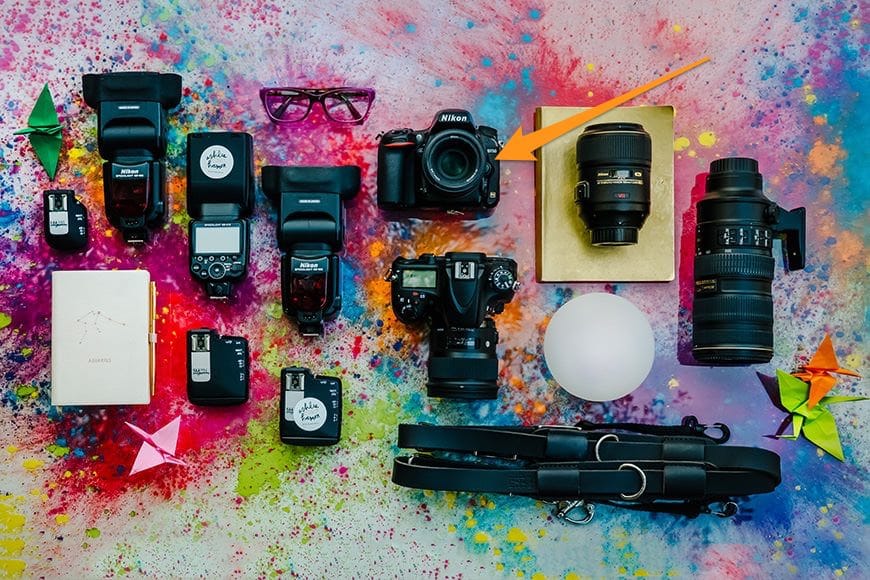
Nikon D750 used by wedding photographer Ashlee Hamon
The Nikon D750 is built around a 24.3MP EXPEED 4 image-processing engine which offers dynamic range and high ISO performance that rivals much newer cameras.
For those who commonly shoot in very bright conditions, highlight recovery in post is a piece of cake with the Nikon D750 files.
As for shadow recovery, well this is the real reason Canon users are secretly all so jealous – imagine being able to under-expose -3 stops, then still easily pull out all the details in post.
If you’re a photographer who needs to take advantage of the most leeway when editing your files, the Nikon D750 is the cheapest way to achieve maximum dynamic range from a full frame sensor. It’s actually still one of the best performing sensors for dynamic range too!
Imagine being able to underexpose a midday landscape photo to preserve all your highlights, then in post, bring back the underexposed shadow portion of your image, further reduce the highlights, and end up with something that resembles a HDR image… but all from one exposure – crazy!
Another thing I love about my Nikon D750s is the size/weight. Compared to other full frame DSLRs, it feels like a toy. Paired up with a lightweight prime like the Nikon 35mm f/1.8G FX, it makes the perfect travel DSLR, and counters any argument that mirrorless cameras are more portable than DSLRs.
[Related: Check out some other great Nikon lenses here.]
Build quality is a somewhat contentious topic. Nikon marketed the Nikon D750 as a ‘prosumer’ camera, and used parts that probably aren’t intended for rigorous, high-volume shooting. I know of a few friends who’ve experienced shutter jams after a few years with the Nikon D750, but personally, I never did.
The flip out screen on the Nikon D750 is another great feature that allows for much easier creative compositions. Tilting LCDs are pretty common on cameras these days, but I’ve never seen one better implemented than the one on the D750 – so simple and quick to pull out, yet so sturdily built.
As with most DSLRs, Live View performance is admittedly rather clunky and slow, and there’s no touch screen here, but you learn to live with focus/recompose over trying to move the AF point to your desired subject.
If you’re coming from the Canon 5D Mark III, prepare to be astounded by the auto-focus abilities of the Nikon D750, particularly in low-light. It uses the same AF and metering technology as the former-flagship D4S, with 51 AF points and 15 cross-type sensors.
This may not sound like much when compared to more modern full frame DSLRs and mirrorless cameras, but trust me – it’s enough to capture all the action, and 6.5 fps means it’s fine for fast-moving sequences too.
One thing to bear in mind is that the Nikon D750 buffer can only accommodate 15 consecutive RAW files in 14-bit lossless format. In practice, this means 2.3 seconds of continuous shooting time before the buffer fills and the camera slows down. You can improve that performance slightly with the newer SanDisk UHS-II memory cards that can transfer 300MB/Sec.

Nikon D750 + Sigma 35mm f/1.4 | Erin Fraser
As for battery life, you’re looking at roughly 1,230 shots per charge, so if you’re shooting a wedding, you really should be packing at least 3 batteries, particularly if you’re using Live View a lot.
Since the Nikon D750 is so small and dinky for a full frame camera of this calibre, many shooters choose to use the MB-D16 battery grip, which allows you to use two EN-EL15 batteries for twice the capacity.
As for image quality, the 24.3MP sensor found on the Nikon D750 is superb, delivering very clean images even at high ISO. I feel perfectly comfortable delivering images to my clients shot at ISO 9000, since the noise when viewed at 100% actually looks great.
The performance of the Nikon D750 is often compared to the former-flagship Nikon D3s, a camera that for many pros was the ultimate single digit Nikon. To have this kind of performance in a body the size of an entry-level DSLR at such a low price is very attractive indeed.
It blows my mind that in 2024 you can find a full frame camera that delivers this level of performance for less than the price of some crop-sensor cameras. The Nikon D750 truly is a marvel, and despite its age, it still deserves its podium position here in my roundup of the best full frame cameras of the year.
Feature to feature, it may not keep up with the latest full frame camera releases, but for the majority of photographers, this doesn’t matter one bit. Simply put, at this price, the Nikon D750 is still the best camera on the market today.
Sony a7R III
Megapixels: 42.2
Dimensions: 5 x 3.8 x 2.9 in. (127 x 96 x 74 mm)
Weight: 657 g (23.2 oz)
I held off for so long before switching to mirrorless cameras for my wedding photography work, but the Sony a7R III was the camera that made finally me take the jump.
Ironically, it was Shotkit’s own review of the Sony a7R III that really had me reaching for my credit card! Even the reviewer, to whom we’d sent a loaner version of the camera, ended up selling his Canon DSLR gear in favour of the new system…
At the core of the Sony a7R III lies a 42.2 MP back-illuminated full frame Exmor R CMOS sensor, with some of the innovations borrowed from the Sony a9 to boost performance to truly world-class levels.
Whilst the previous generation could only manage 5fps burst shooting, the enhanced processing power inside the Sony a7R III sees that rate double to 10fps for up to 28 uncompressed 14-bit RAWs.
One thing to note before we delve into all the pros of this camera is that buffer clearing times even with the fastest Lexar Pro 2000x UHS-II memory cards can be quite slow – 14 seconds after shooting 30 uncompressed RAW files.
I’d recommend you shoot in compressed RAW to greatly increase this performance with no visual degradation in image quality. Also, it should be mentioned that you can still access the menus and settings while the buffer is clearing – a welcome improvement of the Mark II version.
OK, so what’s so amazing about the Sony a7R III? Well, quite a few things to be honest. After you get over the incredible detail captured with the 42.2 MP sensor and impressive high ISO performance, there are more useful features than you can shake a stick at…
5-axis image stabilisation for example is like black-magic for shooting handheld in low-light. Imagine being able to use shutter speeds normally associated with tripod photography to capture handheld nighttime footage, and combined with the new low-vibration shutter mechanism, you can do it even at 10fps!
With 399 phase and 425 contrast-detection AF points, the Sony a7R III is an absolute beast when it comes to finding and locking on to subjects. With 68% coverage of the frame, it still lags behind the Sony a9 and a7 III, but if you’re coming from a DSLR, this kind of coverage is still a revelation…
As for low-light focusing, you can expect -3EV performance, similar to the Nikon D750, the low-light AF monster, but lagging slightly behind the performance of the Nikon D850 at -4EV. Does that matter in real-world usage? Hardly.
The auto-focus abilities combined with the frankly ludicrous capabilities of Eye-AF are the two main reasons that DSLR shooters have come over to mirrorless with the Sony a7R III.
Being able to assign a custom button to Eye-AF means that you essentially have a selection of highly accurate and useful AF modes at your fingertips, ready for any situation.
The Sony A7R III’s Eye AF has actually been enhanced since its predecessor, and now uses the same AF algorithms as the Sony a9.
In AF-C mode with Eye-AF activated, you can continuously track and focus on a bride’s eye, even if they’re walking towards you and looking down or away from the camera. When you use this for the first time, it’ll feel like you’re cheating.
On the topic of customisation options, you’ll be spoilt for choice with the Sony a7R III. Similar to the other Sonys mentioned here, the menu can be a convoluted mess, but thanks to numerous custom buttons and other regular buttons that can be reassigned, you’ll be able to create a camera unique to your shooting style, and never have to delve into the menu again.
My favourite customisation option on the Sony a7R III is the ability to select an instant APS-C crop at the push of a button. What this means is that you’re able to change a 35mm field-of-view to 50mm, or an 85mm for to approximately 130mm, all without switching lenses! It’s a kind of ‘lazy man’s crop’, but with the 42.2 MP, no one will ever know…
Silent shooting at up to 10 fps is genuinely useful for wedding, wildlife, event and other photographers who commonly shoot in quiet environments.
Battery life on mirrorless cameras used to be a joke before the arrival of the Sony a7R III. I was able to shoot over 700 shots at my first wedding, even with consistent use of the rear-LCD. It’s still way behind a DSLR, but certainly impressive considering all the additional electronics being powered.
Coming from a Nikon D750, I was expecting the dynamic range performance of the Sony a7R III to take a big hit, but I was pleasantly surprised. In the image below, I had to pull back a lot of highlights and push the shadows to get a balanced photo, and it came out looking pretty nice :-)
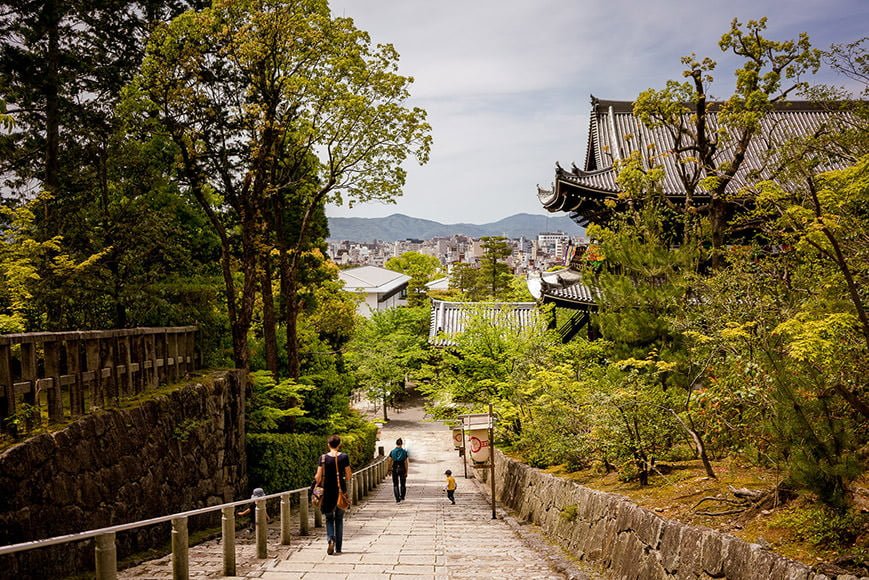
Sony a7R III + Sony 28mm f/2 | 1/2000 f/4 ISO 100 | My travels in Japan in Spring
My preference is to shoot at low ISOs and purposefully underexpose every shot, and the files out of the Sony offer impressive levels of shadow recovery. I’m pleased to say that my post-production workflow after the switch is essentially unchanged.
There’s also a feature called Pixel-Shift Multi Shooting, which composites several images to create an even sharper, un-distorted final image that really makes the most of the sensor’s capabilities. To be honest, as a photographer of moving subjects I never use it, but I can imagine it could be useful for architecture photographers or the like.
Even though the size of mirrorless cameras vs DSLRs is a bit of a double-edged argument (since the size of the lens generally offsets any advantages mirrorless bodies have over DSLRs), I’d be remiss if I didn’t mention how much I love the reduced weight of the Sony a7R III compared to my already lightweight Nikon D750.
Paired with a lightweight prime such as the Sony 28mm f/2 or 35mm f/2.8 Zeiss, I can easily handhold the Sony a7R III all day long (strapless). Thanks to its more ergonomic design and hand-grip, my hands aren’t aching at the end of the day like they used to with a DSLR. I do occasionally use Sony’s Grip Extender too.
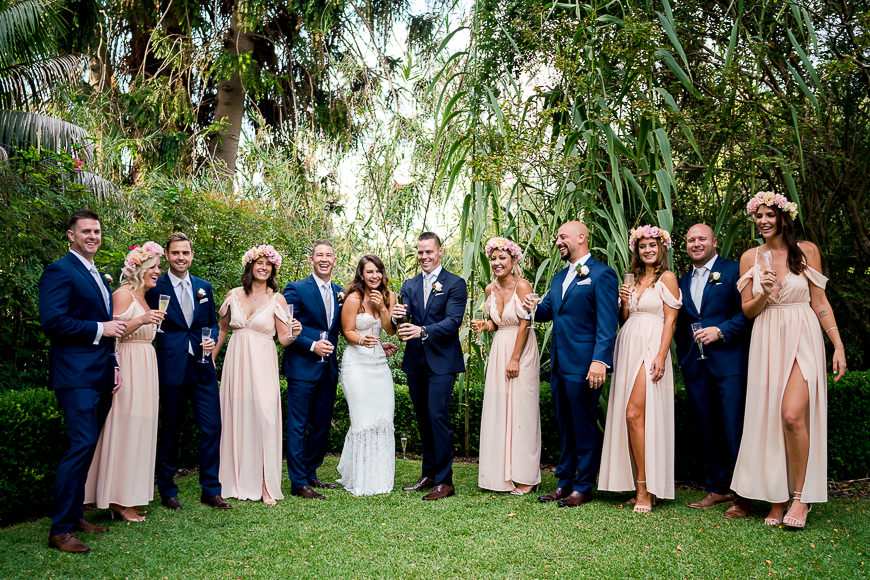
Sony a7R III + Sony 35mm f/1.4 FE | 1/250 f/2.8 ISO 100 | Mark Condon
I’ll say it again – nothing beats the ergonomics of a DSLR, but with all the useful features of modern day mirrorless cameras like the Sony a7R III, you quickly forget about it…
The Sony a7R III truly is a remarkable camera, but I have to say that with the release of the Sony a7 III, it’s become a bit of a hard sell to say that you still need it. Sure, those additional megapixels of the RIII can be useful, but is it really worth it when you think about the massively reduced price of the Sony a7 III?
If you’re a landscape, architecture or commercial photographer who really needs those glorious 42.2 MP files… maybe. But for wedding photographers like me who still have fun with the occasional in-camera crop, probably not.

Sony a7R III vs Sony a7 III | There are benefits, but are they relevant to you? | Camera Decision
I actually found that the huge files of the Sony a7R III slowed down my Lightroom workflow, which is one of the main reasons I decided to sell it in favour of the Sony a7 III.
This said, the Sony a7R III is still an absolutely incredible camera, and will continue to appeal to a certain section of the photographer population. The Sony a7 III is marketed as the brand’s ‘basic’ model, so for those who crave that little bit extra in terms of massive image resolving performance, there really is only one true king.
Canon 5D Mark IV
Megapixels: 30.4
Dimensions: 5.9 x 4.6 x 3 in (150 x 116 x 76 mm)
Weight: 800 g (28.22 oz)
“Finally, something from Canon!”, I hear you cry. Yes, it seems that with all the fanfare around the latest Sony full frame mirrorless releases and Nikon D850, Canon camera owners have remained rather quiet. It has to be said though, the Canon 5D Mark IV is still an incredible camera.
If you look at the release dates of the most popular full frame cameras from Nikon and Canon, it’ll paint a picture of why so many Nikon shooters actually jumped ship to Canon.
In 2014 Nikon releases the Nikon D750. All was good. In 2016, Canon releases the 5D Mark IV. Nikon shooters start wondering why their D750s don’t have touch screen, live view double exposure, dual pixel AF and those warm Canon skin tones…
Photographers are notoriously ‘grass is always greener’ in their camera choices, and unfortunately for Nikon, the Nikon D8500 was released a year too late – many Nikon D750owners had already opped across to Canon for the 5D Mark IV, whether rightly or wrongly so.
Let’s have a closer look at the tangible benefits of this intriguing Canon full frame camera.
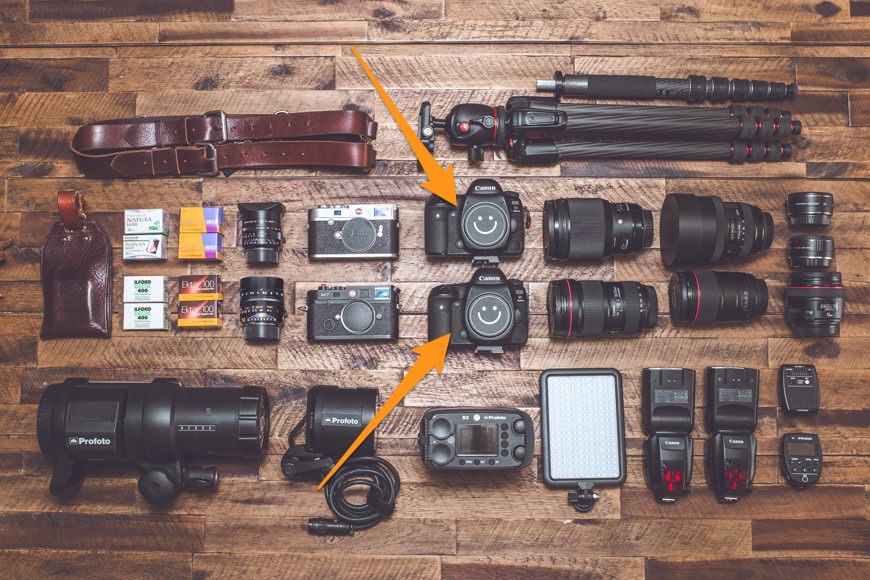
Canon 5D Mark IV used by wedding photographer Jimmy Bui
The Canon 5D full-frame DSLR range was always a class-leader, all the way back to the incredible image quality of the original 5D in 2005. ISO and AF performance were given small, incremental bumps along the way, but then came the Canon 5D Mark IV… and Hallelujah! Canon shooters were finally given a peek into Nikon AF and high DR performance…
It’s clear that Canon listened to their users when engineering the Canon 5D Mark IV, producing a camera with impressive dynamic range, clean high ISO and the best auto focus system ever seen in a Canon body.
Another neat addition was the inclusion of a truly functional touch screen – not just for quicker and more intuitive image review, but more importantly, for actual shooting.
Video shooters rejoice in being able to ‘rack focus’ just by dragging their finger from one area of the screen to another, and for us stills shooters, being able to focus and shoot just with a tap on a DSLR is a revelation.
Although few pros would like to admit it, using Live View to shoot stills is becoming more and more popular. Being able to see changes in exposure on the fly is a huge time saver, and many prefer to compose an image by seeing how it looks on the camera’s LCD.
Live View on the Canon 5D Mark IV is excellent – even faster and more responsive than Nikon’s flagship D5.
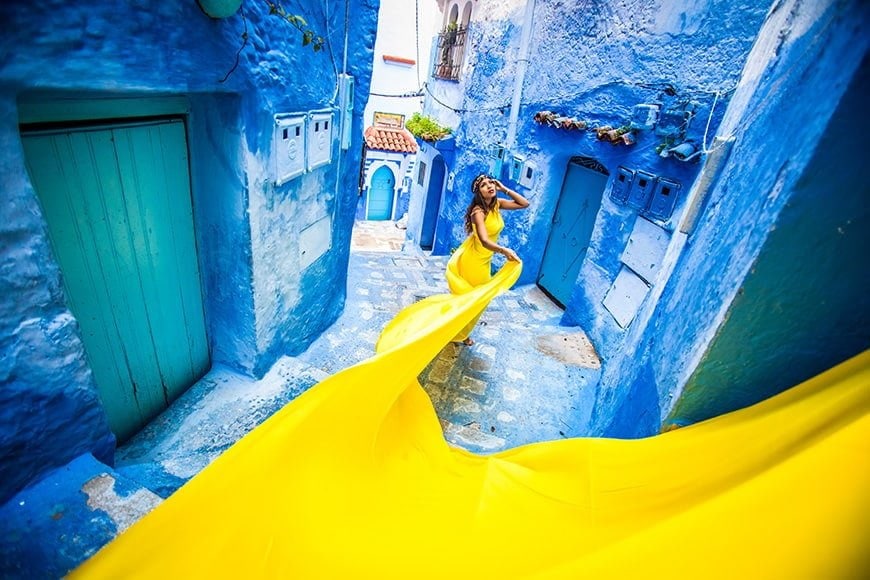
Canon 5D Mark IV + Canon 16-35mm f/2.8 | Laura Grier
The only gripe I have this the Canon’s rear LCD is that it’s not a tilt-screen. If you’ve been shooting DSLRs with tilt-screens for most of your career (like me), it would be hard to go back to a static screen. Maybe not a deal-breaker to some, but at least a bit of an annoyance when everything else is so perfectly implemented.
On the other hand, in-camera double exposures via Live View is a killer feature only offered by Canon DSLRs (it’s more common with mirrorless). Nikon users have to fiddle around blindly if they want to create multiple exposures, with no way to view a live preview of how the exposures ‘stack’. It’s great fun and much easier creating multiple exposures with the Canon 5D Mark IV‘s touch screen Live View.
Image quality is superb, with impressive colours and detail retention even at higher ISOs. Skin tones are beautiful – a staple of the 5D series.
Canon has always had the edge on Nikon when it comes to skin tones straight-out-of-camera, thanks in part to the sensors’ natural tendency to favour a red (warm) tone, as opposed to Nikon’s greenish hues.
As for shooting in low-light with the Canon 5D Mark IV, you can expect to deliver files shot up to ISO 12,800 with noticeably less noise than its predecessors and nice preservation of detail and colour.
Canon has always been a step ahead of its competitors when it comes to the selection of lenses. Being able to offer such a wide range of both prime and zoom lenses, not to mention the enviable f/1.2L lenses, has been a major factor in steering photographers towards the Canon brand.
In addition, Canon’s best lenses are available for cheaper than Nikon counterparts, sometimes by as much as a few hundred dollars.
Combining the Canon 5D Mark IV with the Canon 50mm f/1.2L for example will have Nikon, Sony and every other brand of camera users looking over enviously – there simply isn’t a way to reproduce the look of this gorgeous lens, and the 5D Mark IV with its 30.4 MP really makes the most of every mm of the premium L glass.
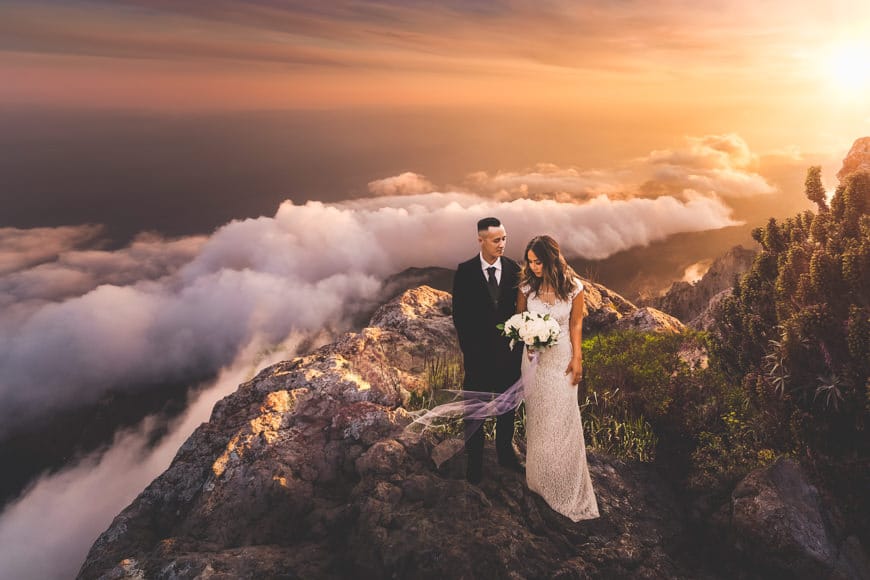
Canon 5D Mark IV + Canon 50mm f/1.2L | Jimmy Bui
I feel like I should mention the Dual Pixel technology in the Canon 5D Mark IV, which allows you to adjust the focus point in post-production. It was hailed as a technological break-through upon its release, but in reality, you’ll struggle to find a useful real-world application for it. It does however help to improve Live View AF performance, which is genuinely very useful indeed.
Ergonomics on the Canon 5D Mark IV are excellent, and for those coming from the Mark III, completely intuitive and with very little change indeed. Battery life isn’t quite as impressive as the equivalent Nikons, but this doesn’t bother me too much since the Live View functionality is just so much better.
To conclude, I feel like the release of the Canon 5D Mark IV really restored Canon shooters’ faith in the brand. It’s not a game-changing camera by any means, but prior to the release of the Nikon D850 a few years later, it was really only the expensive Nikon D5 that could compete head to head with it.
As my buddy Jay Cassario wrote in his Canon 5D Mark IV review back in early 2017, Canon had engineered a camera that has just about everything a portrait or wedding photographer can need, or even want in a single camera.
It was the camera in fact that caused Jay to sell all of his Nikon gear and switch brands!
Despite the release of the Nikon D850, I think the Canon 5D Mark IV is still a wise investment, and definitely a good reason to stick with Canon if you’re already a Canon shooter. It’s a well built camera with excellent image quality and genuinely useful features not offered by any other DSLR on the market.
Nikon D5
Megapixels: 20.8
Dimensions: 6.3, x 6.3 x 3.7 in (160 x 158 x 92 mm)
Weight: 1240 g (43 oz)
If you’re looking for the absolute best full frame DSLR of 2024, look no further – the Nikon D5 still wears the crown. So why is it so far down my list?
Best image quality? Check. Best ISO performance? Check. Best speed performance? Check. Most robust body? Check.
…but is the Nikon D5 suitable for every photographer out there? Of course it isn’t, and no flagship DSLR is. I can’t tell you that the Nikon D5 is the best all-round full frame camera, as only a very small percentage of photographers will ever touch one, let alone own one.
For those select few who are wealthy enough, or who think they need one to complete their photography work to the best of their abilities, you definitely won’t be disappointed in this camera.
With each release of the single-digit Nikon DSLRs, Nikon rewrites the rule books. The 12 fps high-speed continuous shooting on the Nikon D5 may not sound like much to a mirrorless camera shooter, but for a DSLR to be able to achieve this is no mean feat.
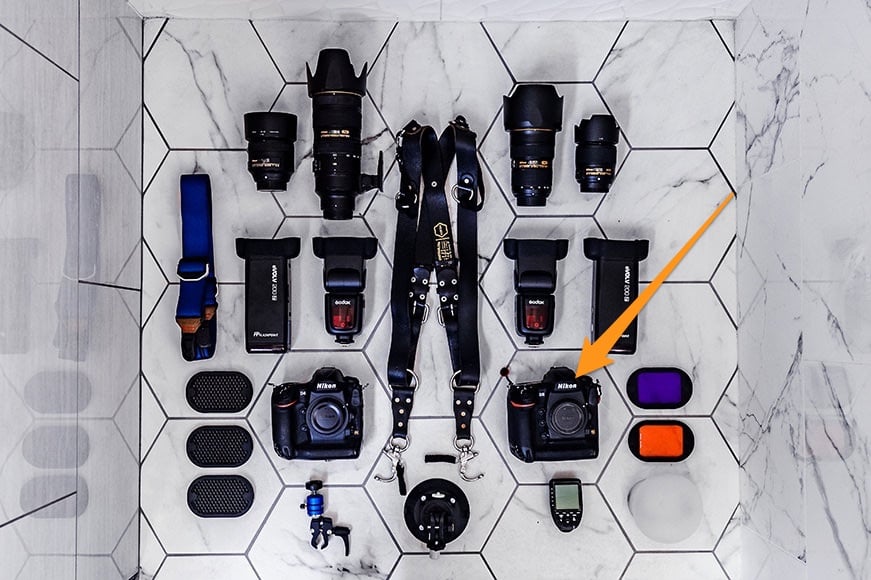
Nikon D5 used by Carsten Schertzer
Combine this speed with the best auto-focus and buffer performance currently available on any camera, the Nikon D5 is the ultimate tool for sports photographers, wild-life photographers, and any other photographer who needs to shoot hundreds of images in quick succession without missing a beat.
153 AF points and 99 cross sensors spread across the frame allows for lightning fast auto focus performance even in low light. There’s also the addition of Auto AF fine tune, a new feature to Nikon cameras that allows you to make micro adjustments to optimise the focus performance of all of your lenses.
The Nikon D5 also offers the best high ISO performance of any camera, with a native range of 100 to 102,400, and a frankly ridiculous extended ISO of 3,280,000! You definitely won’t be delivering any files over a million ISO, but image quality at ISO 25,600 is definitely still good enough for professional use.
As for general image quality, many Nikon D5 shooters report of more ‘Canon-like’ colours, with reddish hues outweighing the traditional greenish quality of Nikon files. This lends to more realistic skin tones straight out of camera.
Dynamic range is however a step back from other Nikon full frame cameras, with considerable noise from a modest 3 stop push, even at lower ISOs. However, the DR is still more than enough to get a fully dynamic scene on a sunny day, and the trade off for incredible high ISO performance for the majority of photographers is definitely worth it.

Nikon D5 + Nikon 24-70mm f/2.8 | Jason Halayko
Live View on the Nikon D5 is incredibly responsive and fast enough to use even with Auto-Focus. Touch screen implementation is also excellent, especially the ability to double tap the screen during playback to view your image at 100% magnification. Swiping through images feels intuitive and natural, and will quickly become your preferred way to make reviews.
The sheer size of the Nikon D5, and any flagship body for that matter, is the polarising point of ownership. That and the price of course, but we’ll come to that later…
Make no mistake – the Nikon D5 is one hulk of a camera, at almost twice the size and weight of the prosumer Nikon D750. Whilst it feels perfectly balanced and is an absolute joy to grip, it will obviously be a little bit too much for many people.
Pair it with a big Nikon zoom lens, and you’ll quickly hate your life! Pair it with a small prime like the excellent Nikon 58mm f/1.4 however, and it’s acceptable… to the point of being actually enjoyable to use, even for long periods.
You can opt for dual CF or dual XQD card slots, with the latter cards being much more expensive. Whichever card slot option you choose, you can expect virtually unrestricted shooting – the buffer on the Nikon D5 is seemingly unbufferable!!
As for battery life, well it’s probably to be expected from such a big battery that needs a specific charger, but 3,780 shots per charge is still very impressive, and sets new standards as to what we can look forward to with camera battery technology of the future.

Nikon D5 + Nikon 24mm f/1.4 | ISO 25600! | Sam Hurd
It’s worth mentioning at this point that despite the features and functionality of the Nikon D5 clearly appealing to photographers of fast moving subjects, it’s actually a popular camera for wedding photographers – check out Sam Hurd’s review of the Nikon D5.
It seems that if you need the absolute ultimate in high ISO performance during low-light portions of the wedding day, the price-tag is largely justifiable.
This leads us on nicely to the elephant in the room. At around six and a half grand, the Nikon D5 clearly isn’t for everyone.
Its bulky size, mammoth weight and eye-watering price tag make the Nikon D5 a specialist full frame camera, but nonetheless, it’s still a very impressive one. It beats all other full frame cameras in many respects, but it’s still a camera for the minority.
If you absolutely need the best AF and high ISO performance in a bullet-proof camera body that will last for years, the Nikon D5 is simply the only choice.
The latest mirrorless cameras may come close, but despite its Goliath proportions, the Nikon D5 is leagues ahead when it comes to ergonomics, battery life and usability. It really is the ultimate professional full frame camera.
Canon 6D Mark II
Megapixels: 26.2
Dimensions: 5.6 x 4.3 x 2.9 in (144 x 110 x 74 mm)
Weight: 685 g (24.16 oz)
The first time I shot with a first generation Canon 6D back in 2015, I considered switching from Nikon to Canon. Something about the size, the placement of buttons, the image quality and just how affordable it was compared to other full frame cameras… I had a long hard think about switching to the dark side.
So what was it that stopped me from making the move? The single (as opposed to dual) card slot. Did they fix this with the release of the Canon 6D Mark II? NO! So why have I still decided to include the Canon 6D Mark II in this roundup of the best full frame cameras of the year?
Depending on what kind of photographer you are, the fact that the Canon 6D series only has one card slot may be completely irrelevant… or may be a complete deal-breaker.
As a professional wedding photographer who requires instant in-field backups, I feel that by not having an additional card, slot, I’m greatly reducing my odds of coming home with safe images.
However, there are many wedding photographers who disagree (check out the Stark’s Canon 6D Mark II review for example), and there are also a great many photographers who couldn’t care less.
So have a quick think about whether or not you need 2 card slots. If the answer’s no, well then, you can continue reading about this absolute bargain of a full frame camera…
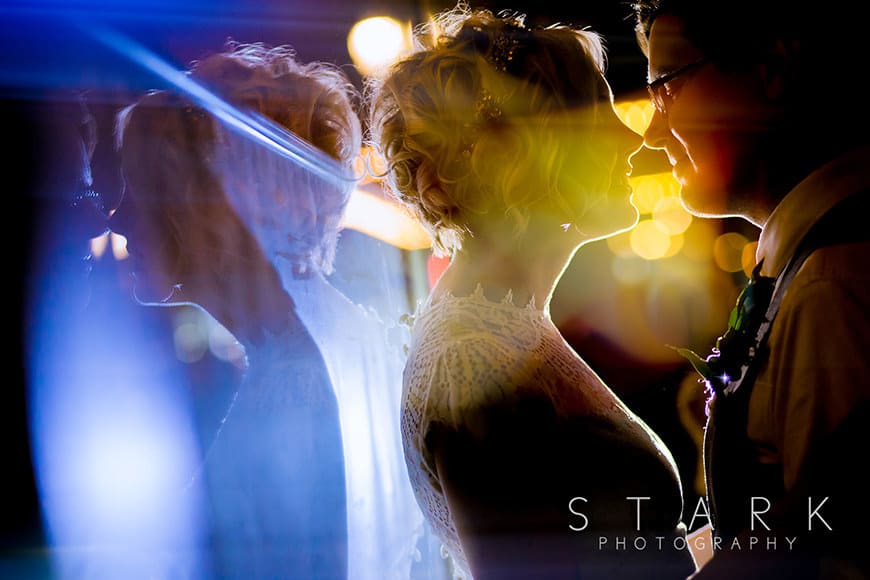
Canon 6D Mark II + Canon 85mm f/1.8 | 1/250 f/2.5 ISO 5000 | Stark Photography
The Canon 6D Mark II houses a 26.2MP CMOS sensor and DIGIC 7 Processor that delivers detailed, sharp and rich images, even at high ISO. Straight out of camera, Canon files are unbeatable, and paired with Canon’s exotic prime lenses, you’ll be able to achieve looks that simple aren’t possible with other glass.
Noise-wise, the Canon 6D Mark II does a fine job with higher ISOs – not as good as the Canon 5D Mark IV, but that’s to be expected of an entry-level DSLR, even if it is full frame. Unless you rely heavily on ISO 12,800 for a lot of professional work, you won’t be disappointed with the low-light performance of this camera.
As for dynamic range, don’t expect too much latitude for pushing and pulling your files in post. If you’re someone who relies on being able to retrieve enormous shadow and highlight detail from your files, you may be disappointed with the Canon 6D Mark II… but it has to be said that most photographers won’t miss this ability.
Auto Focus performance on the Canon 6D Mark II has taken a huge leap from its predecessor, particularly in Live View. The Dual Pixel technology of the 5D Mark IV has trickled down into the 6D Mark II – whilst it’s a bit of a gimmick as a way to switch focal points in post production, it does mean that switching focus points during Live View stills or video capture is much, much more responsive.
One other area of the Canon 6D Mark II that some have found to complain about is the comparatively narrow spread of the 45 AF points across the screen.
If you’re coming from a superior DSLR or just about any mirrorless camera, the narrower focal point spread may admittedly seem a little restrictive, but it’s not a deal-breaker in my opinion.
The focus-recompose method may have its haters, but you wouldn’t believe the number of pros who use it day in day out, and never miss a beat.
In addition, Live View is so well implemented on the Canon 6D Mark II that in any close-up situation where more accurate focus is required, you can always touch any part of the rear LCD in Live View mode to have the camera focus and shoot instantly.
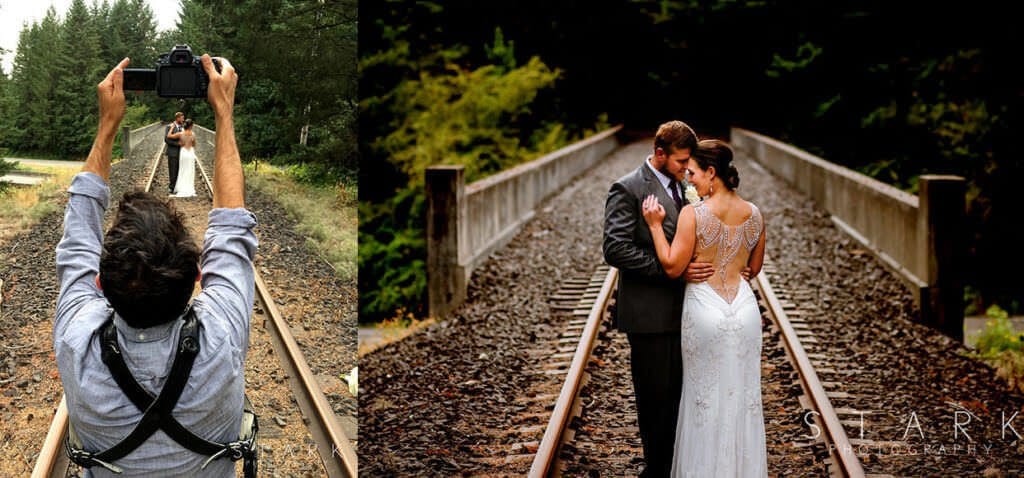
Daniel Stark using the flip screen of the Canon 6d Mark II
My favourite feature of the Canon 6D Mark II is actually the flip-out LCD touch screen – it’s the only Canon full frame DSLR to currently offer this, and is useful for so many applications. Selecting and adjusting focus is a breeze, and two fingers can be used for zooming and changing images in playback mode – something I consider essential for all touchscreens in this smartphone era.
Used in conjunction with face tracking, the Dual Pixel technology does an impressive job of locking on to any faces in your frame, and a tap of the finger allows you to refocus on a new subject almost instantly.
Being able to flip the touch screen 180 degrees has made the Canon 6D Mark II hugely popular with vloggers, as a way to see their own face while recording and leave AF tracking totally up to the camera.
As for the build of the Canon 6D Mark II, it does feel a little plasticky compared to more expensive cameras, but it’s still reassuringly solid whilst being small and light to boot. Plus it’s weather-sealed, which is a huge bonus for a cheap full frame camera.
Grip size is fine for any hand size, and the controls are familiar for any Canon Shooter – I’m a big fan of the rear rotating dial, which is the perfect way to scroll through images for review – much better than Nikon’s thumb pad.
Battery life is decent; the buffer won’t cause you any issues, and 6.5 fps shooting is slightly above average for an entry-level full frame DSLR. Then there’s WiFi with NFC and GPS – nice inclusions on a full frame camera of this price.
As the Starks said after shooting 10 weddings with this camera, the Canon 6D Mark II is a professional grade camera disguised as a consumer camera… with a consumer price.
I have to say I agree – despite its relative shortcomings, most photographers quickly realise that this camera actually offers everything you really need in a full frame camera – decent image quality, decent auto-focus and useful features… all at an affordable price.
The Canon 6D Mark II is above all an attractive entry point into the world of full frame photography, and a great way to start experimenting with that gorgeous selection of Canon L-series glass.
How we Selected the Best Full Frame Cameras
The order of my selections above may surprise you. To be honest, it’s been rather hard trying to actually rate one full frame camera over another!
Full frame cameras by their very nature already offer first class image quality, so it boils down to features and value for money when trying to rank them.
I’d recommend that you read each of my full frame camera reviews below and come to your own conclusions based on what you actually need in a camera.
It’s also worth noting that my review currently ignores full frame cameras from other manufacturers such as Leica and Pentax (Ricoh) since I don’t deem them mainstream enough yet.
Both brands produce excellent full frame cameras (most notably the Pentax K1, a camera with impressive dynamic range at an attractive price), but their products are still rather niche.
That said, I may update this post in the future to feature their products.
Meaning of ‘Full Frame Camera’
I guess we should start by defining what a full frame camera actually is, and why it can benefit you and your photography so much.
The term ‘full frame’ refers to a digital camera sensor which is the same size as traditional 35mm film camera sensors (actually 36 x 24mm).
The main advantages of full frame cameras over crop sensor cameras are better low light performance and greater dynamic range.
Lenses also retain their ‘true’ focal length, meaning that a 50mm lens on a full frame camera gives a 50mm field of view, instead of one equivalent to approximately 85mm on a crop sensor camera (due to a multiplication factor of the smaller sensor size).
This may be an advantage for those who need their wide angle lenses as wide as they were intended to be, for example, but for a wildlife photographer who needs some extra reach on their long zoom lens, a crop sensor may actually be more favourable.
For the majority of photographers, a full frame camera offers great, tangible benefits over smaller sensor formats, reducing limitations whilst increasing creative options.
In short, if you can afford one, buy a full frame camera – you won’t regret it!
Let’s have a quick look at what full frame cameras are still available in 2024. I included the 3 main manufacturers producing consumer full frame cameras: Canon, Nikon and Sony.
List of Canon Full Frame Cameras
Current models:
Canon EOS R5 (2020)
Canon EOS R6 (2020)
Canon EOS RP (2019)
Canon EOS R (2018)
Canon 1DX Mark II (2016)
Canon 5DsR / 5Ds (2015)
Canon 5D Mark IV (2016)
Canon 6D Mark II (2017)
Older models:
Canon 1Ds (2002)
Canon 1Ds Mark II (2004)
Canon 1Ds Mark III (2007)
Canon 1D X (2012)
Canon EOS 5D (2005)
Canon EOS 5D Mark II (2008)
Canon EOS 5D Mark III (2012)
Canon EOS 6D (2012)
List of Nikon Full Frame Cameras (FX)
Current models:
Nikon Z6 II (2020)
Nikon Z7 II (2020)
Nikon Z7 (2018)
Nikon Z6 (2018)
Nikon D5 (2016)
Nikon D850 (2017)
Nikon D810A (2015)
Older models:
Nikon D3 (2007)
Nikon D3X (2008)
Nikon D3S (2009)
Nikon D4 (2012)
Nikon D4S (2014)
Nikon D800 / Nikon D800E (2012)
Nikon D810 (2014)
Nikon Df (2013)
Nikon D700 (2008)
Nikon D750 (2014)
Nikon D600 (2012)
Nikon D610 (2013)
List of Sony Full Frame Cameras
Current models:
Sony a1 (2021)
Sony a7S III (2020)
Sony a7c (2020)
Sony a7R IV (2020)
Sony a7S II (2020)
Sony a9 II (2019)
Sony a7R III (2019)
Sony a7 III (2018)
Sony a7R III (2017)
Sony a9 (2017)
Sony a99 II (2016)
Older models:
Sony a7R II (2015)
Sony a7S II (2015)
Sony a7 II (2014)
Sony a7 S (2014)
Sony a7 (2013)
Sony a900 (2008)
Sony a850 (2009)
Sony a99 / a99 II (2012)
Cheap Full Frame Cameras
I’ve included the ‘older models’ in each of the lists above in an attempt to highlight something important.
There’s at least one new full frame camera camera released every year. Sony sometimes even releases two. What does this mean? There are plenty of incredible full frame cameras on the market which are falling in price every day!
Everyone’s budget and needs are different, but the growth in cheap full frame cameras each year means that more and more photographers can take advantage of a camera format that was once considered out of reach for most.
The very latest full frame cameras usually offer more features, but it’s arguable as to whether image quality has improved all that much over the years… at least for the needs of the average consumer shooting in normal light.
Pro photographers may jump on every new full frame camera release, but my advice to you as a first time buyer of this format would be to look to the older models.
The Sony a7 for example, is one of the cheapest full frame cameras you’ll find. As a mirrorless camera, it even offers functionality that more modern DSLRs don’t. You can get it for under a thousand dollars with a 28-70mm lens included – incredible value for money! Even the Sony a7 II is still great value – see here.
Anther recommended cheap full frame cameras that offer stunning image quality for around the thousand dollar mark is the original Canon 6D, a camera much loved by both amateurs and professionals alike.
To think you can get a camera with a full frame sensor for around $1,000 blows my mind.
As for Nikon shooters, I was a big fan of the Nikon D610 which I reviewed here. If you can extend your budget just slightly however, the Nikon D750 is amazing value for money at just under $1.5k – you’re getting a lot of camera for that price – read more about why I love the D750 in my review below.
When shopping for a cheap full frame camera, my advice would be to not worry about any missing features of a cheap full frame camera compared to a more recent (more expensive) model.
Many features added to camera each year aren’t essential, and the quality of the image in most situations will be identical too.
Frequently Asked Questions
What is the best full frame camera?
There are a lot of incredible options out there, but we’re going to single out the Sony a7 III. It’s mirrorless which makes it smaller and lighter, boasts laser-sharp autofocus, is great in low light, and has advanced functions like Sony’s Eye-AF eye-tracking and face recognition.
Can you use a crop lens on a full frame camera?
It may be possible to use a crop lens on your full frame camera, depending on the compatibility of the mount (some camera bodies simply won’t allow it). That said, it’s generally not a good idea as your images will either be cropped or suffer from obvious vignetting due to the difference between the size of the lens and the sensor.
Does a full frame camera take better pictures?
Yes – generally speaking, full frame cameras produce better quality images. This is because a larger sensor means more pixels, which means higher resolution images. Therefore a full frame camera will perform better in low light, allow for a shallower depth of field, and give greater dynamic range.
What is the cheapest full frame camera?
If we were to recommend a full frame camera that’s truly a bargain for what you get, we’d have to say the Nikon D750. While you may find cheaper full frame cameras on the market, the D750 is the best value for money. It’s lightweight compared to other DSLRs, has one of the best performing sensors for dynamic range, and has impressive auto-focus abilities even in low light.
Final Words
Remember, owning a full frame camera isn’t the be all and end all of photography. Many a great image has been captured on a smaller-sensor camera, or even on a smartphone. The moment, after all, is usually what matters the most.
That said, full frame cameras do offer the best image quality in certain shooting conditions, and allow you to capture images that may not have been possible on smaller sensors.
Compared to the relatively minor jump in image quality (and big step back in overall performance) when considering a medium format digital camera like the Fujifilm GFX 50S, full frame cameras offer large, measurable benefits over crop sensor cameras.
In my opinion, any serious enthusiast photographer should experience the full frame advantage at least once, if only to decide whether its a necessary tool in their repertoire.
As for professional photographers, unless you rely heavily on the longer reach of equivalent lenses used on crop sensor cameras, you should all be budgeting for full frame.





